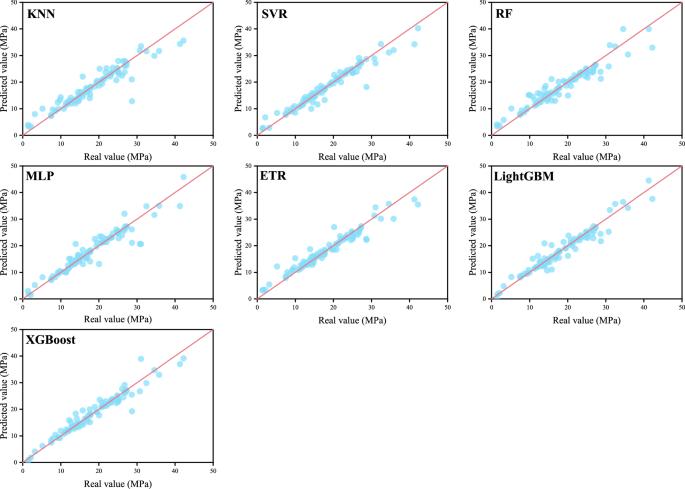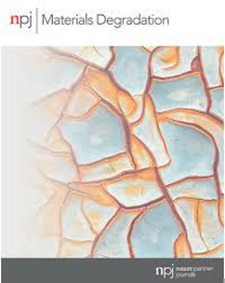用于预测腐蚀管道残余强度的新型堆叠集合学习器
IF 7.6
2区 材料科学
Q1 MATERIALS SCIENCE, MULTIDISCIPLINARY
引用次数: 0
摘要
准确评估腐蚀油气管道的残余强度对于确保其安全稳定运行至关重要。机器学习技术能够处理数据中复杂的非线性关系,因此有望解决这一难题。以往的研究主要侧重于通过优化单一模型来提高预测精度,而本研究则不同,它将重点转移到了另一种方法上:堆叠集合学习。本研究采用由七个基础学习器和三个元学习器组成的堆叠模型,使用 453 个实例的数据集预测管道的剩余强度。利用自动超参数调整库搜索最佳超参数。通过评估基础学习器和元学习器的各种组合,确定了最佳堆叠配置。结果表明,使用 k 近邻作为元学习器和七个基础学习器的堆叠模型具有最佳预测性能,决定系数为 0.959。与单个模型相比,堆叠模型还显著提高了泛化性能。不过,由于样本量较小,堆叠模型在低强度管道上的有效性受到了限制。此外,将原始特征纳入第二层模型并不能显著提高性能,这可能是因为第一层模型已经提取了大部分关键特征。鉴于模型优化对预测准确性的贡献微乎其微,这项工作为提高模型性能提供了一个新的视角。研究结果对腐蚀管道的完整性评估具有重要的现实意义。本文章由计算机程序翻译,如有差异,请以英文原文为准。


A novel stacking ensemble learner for predicting residual strength of corroded pipelines
Accurately assessing the residual strength of corroded oil and gas pipelines is crucial for ensuring their safe and stable operation. Machine learning techniques have shown promise in addressing this challenge due to their ability to handle complex, non-linear relationships in data. Unlike previous studies that primarily focused on enhancing prediction accuracy through the optimization of single models, this work shifts the emphasis to a different approach: stacking ensemble learning. This study applies a stacking model composed of seven base learners and three meta-learners to predict the residual strength of pipelines using a dataset of 453 instances. Automated hyperparameter tuning libraries are utilized to search for optimal hyperparameters. By evaluating various combinations of base learners and meta-learners, the optimal stacking configuration was determined. The results demonstrate that the stacking model, using k-nearest neighbors as the meta-learner alongside seven base learners, delivers the best predictive performance, with a coefficient of determination of 0.959. Compared to individual models, the stacking model also significantly improves generalization performance. However, the stacking model’s effectiveness on low-strength pipelines is limited due to the small sample size. Furthermore, incorporating original features into the second-layer model did not significantly enhance performance, likely because the first-layer model had already extracted most of the critical features. Given the marginal contribution of model optimization to prediction accuracy, this work offers a novel perspective for improving model performance. The findings have important practical implications for the integrity assessment of corroded pipelines.
求助全文
通过发布文献求助,成功后即可免费获取论文全文。
去求助
来源期刊

npj Materials Degradation
MATERIALS SCIENCE, MULTIDISCIPLINARY-
CiteScore
7.80
自引率
7.80%
发文量
86
审稿时长
6 weeks
期刊介绍:
npj Materials Degradation considers basic and applied research that explores all aspects of the degradation of metallic and non-metallic materials. The journal broadly defines ‘materials degradation’ as a reduction in the ability of a material to perform its task in-service as a result of environmental exposure.
The journal covers a broad range of topics including but not limited to:
-Degradation of metals, glasses, minerals, polymers, ceramics, cements and composites in natural and engineered environments, as a result of various stimuli
-Computational and experimental studies of degradation mechanisms and kinetics
-Characterization of degradation by traditional and emerging techniques
-New approaches and technologies for enhancing resistance to degradation
-Inspection and monitoring techniques for materials in-service, such as sensing technologies
 求助内容:
求助内容: 应助结果提醒方式:
应助结果提醒方式:


